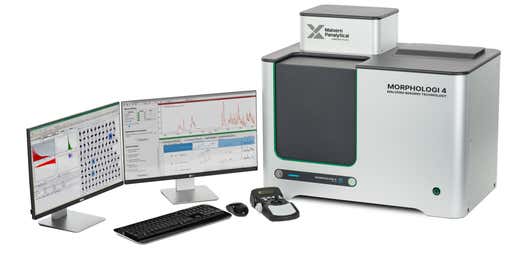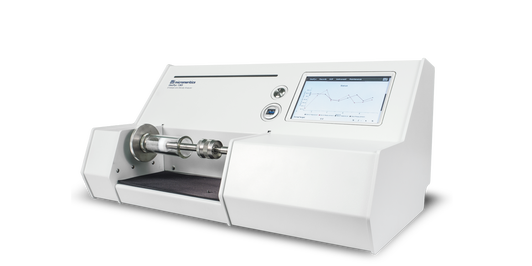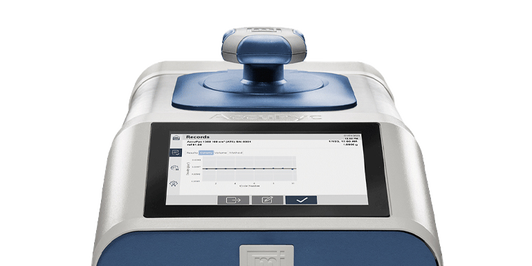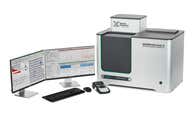Análise de polímeros


A variedade de aplicações para polímeros é imensa, portanto, não surpreende que as técnicas de análise desses materiais também sejam abrangentes. Antes que materiais e produtos poliméricos possam passar do laboratório de pesquisa e desenvolvimento para a linha de produção ou da linha de produção para o consumidor final, sua qualidade e desempenho precisam ser testados.
Desde determinar como as cadeias poliméricas são distribuídas, verificando o teor de catalisadores com fluorescência de raios-X (XRF), monitorar a cristalinidade com difração de raios-X (XRD), até avaliar tamanho e morfologia de partículas com difração a laser e análise estática de imagens, a Malvern Panalytical oferece soluções inovadoras para todas as necessidades em análise de polímeros.




A fluorescência de raios-X (XRF) é uma técnica comprovada de análise elementar utilizada em diversos setores. Quando os raios-X atingem os átomos de um material, eles emitem "impressões digitais" fluorescentes que indicam a composição elementar do material. Esses dados são essenciais para a conformidade com diretivas globais relativas ao conteúdo de metais tóxicos, como RoHS-3, WEEE e ELV.
A Malvern Panalytical fornece instrumentos de XRF de última geração e materiais de referência para caracterização de polímeros, incluindo ADPOL para análise de aditivos e cargas, e TOXEL para análise precisa de elementos tóxicos.

Investigar a estrutura cristalina e a composição das fases dos polímeros é fundamental para compreender e otimizar suas características de desempenho. O arranjo das regiões cristalinas e amorfas em um polímero influencia diretamente sua resistência mecânica, estabilidade térmica e resistência química.
A Malvern Panalytical oferece, em sua linha de difração de raios X (XRD), dois difratômetros de alto desempenho: o Aeris e o Empyrean.

Ambos os instrumentos oferecem um recurso essencial para caracterização de polímeros: são projetados para serem facilmente modificados com acessórios de hardware e novo software. Por exemplo, a estrutura modular do Aeris permite a fácil adição de acessórios, enquanto o conceito PreFIX do Empyrean possibilita a troca rápida entre diferentes configurações sem procedimentos trabalhosos de realinhamento, garantindo flexibilidade incomparável.
Essa flexibilidade também contribui para maior sustentabilidade. Com os microplásticos se tornando uma preocupação crescente, é provável que futuras regulamentações tornem mais rigorosos os requisitos para triagem de polímeros visando prevenir danos ambientais. Instrumentos de XRD preparados para o futuro estão prontos para qualquer novo processo analítico, fornecendo insights mais profundos sobre o impacto ambiental dos polímeros.
A maneira mais inteligente de medir o tamanho das partículas
A análise da distribuição do tamanho das partículas desempenha um papel crucial no campo dos polímeros, oferecendo insights essenciais tanto sobre matérias-primas quanto sobre produtos finais. Esse processo analítico auxilia a caracterizar o intervalo e a distribuição dos tamanhos de partículas, influenciando diretamente as propriedades mecânicas, térmicas e químicas do polímero.
A difração a laser mede a variação angular na intensidade de um feixe laser dispersado, utilizando-a para gerar informações sobre as distribuições de tamanho. O Mastersizer 3000+ é um instrumento de DL compacto e versátil que atende às exigências analíticas e fluxos de trabalho dos laboratórios modernos.

Caracterização rápida, automatizada e específica de componentes em uma únic...
A morfologia do polímero é essencial para examinar como a disposição, ramificação e peso molecular das cadeias poliméricas influenciam as propriedades estruturais e mecânicas do polímero. Ramificação e distribuição de peso molecular são particularmente cruciais.
A disposição das cadeias poliméricas, incluindo o grau de ramificação e a distribuição dos pesos moleculares, desempenha um papel significativo na determinação de características como resistência mecânica, viscosidade, comportamento térmico e resistência química. Por exemplo, a ramificação pode influenciar como as cadeias poliméricas se entrelaçam e interagem, afetando a densidade e flexibilidade do material. De modo semelhante, variações no peso molecular afetam a processabilidade e o desempenho geral do polímero, sendo que pesos moleculares maiores geralmente levam a maior resistência e tenacidade.
O Morphologi 4-ID é especificamente projetado para analisar polímeros. Ele fornece descrições morfológicas detalhadas de amostras particuladas por meio de análise estática de imagens, permitindo a medição de diversos parâmetros, como tamanho e forma das partículas. Esse sistema é especialmente eficaz para caracterizar partículas poliméricas, inclusive as utilizadas em aplicações como processos de fusão em leito de pó.
O Morphologi 4-ID combina imagens automatizadas com identificação química, permitindo uma análise abrangente das estruturas e propriedades poliméricas, essencial para otimizar o desempenho do material em várias aplicações.
Com sua gama de propriedades únicas, polímeros novos e avançados desempenham um papel importante no avanço em direção a materiais mais sustentáveis. O desenvolvimento, fabricação e garantia de qualidade desses polímeros requerem as ferramentas e o conhecimento mais avançados. É por isso que a Malvern Panalytical é sua parceira em descobertas.
Nossos especialistas são autoridades em suas áreas e podem ajudá-lo a combinar seu know-how com nossa expertise em medições. Desde a instrumentação até o treinamento de operadores, assistência na preparação de amostras e suporte em manutenção, estamos prontos para ajudar você em cada etapa do desenvolvimento e fabricação de polímeros.